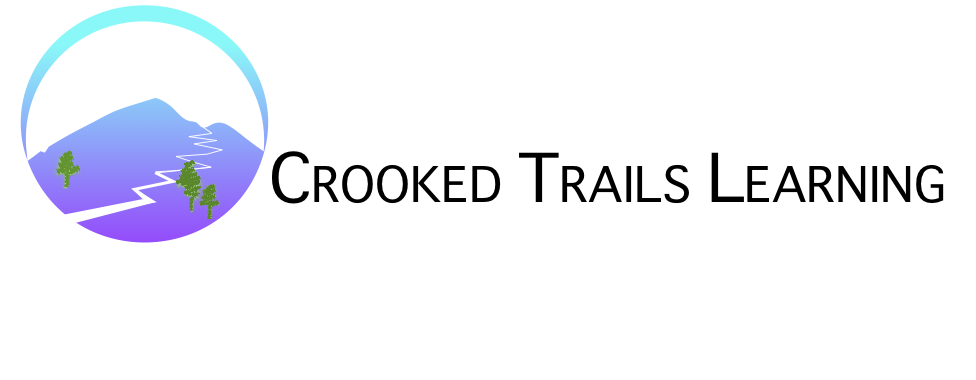Why a Foreign Language Blog for Homeschoolers?
/Getting the Word Out
Muzzy, Little Pim, Duolingo, Rosetta Stone, Henley, Hey Andrew, The Learnables, Learning Wrap-ups, Switched-On, Power Glide, La Clase Divertida, Le Français Facile, Sing Song, Visual Latin…so many second language curricula! For Spanish alone, the Rainbow Resource Catalog offers 24 separate DIY curricula. Cathy Duffy reviews 18 Spanish curricula. Then of course, there are co-op classes which may use the curricula above, or the typical classroom curricula - McGraw Hill sells 525 different Spanish books and related materials! Which to choose?
Not going to review them. Nope, not going to do it. I have something better - one idea that will help you wade through all the offerings, and get your student to fluency in a second language. This principle is affectionately abbreviated as “TPRS/CI” - "Teaching Proficiency through Reading and Storytelling" and "Comprehensible Input".
TPRS/CI is a teaching method that fits very well into many homeschool tenets:
Teach the student, not the curriculum.
Have fun while learning.
Teach several ages at once.
Learn with purpose, not to create a worksheet binder.
Foster creativity and celebrate individual strengths.
Don’t spend money unnecessarily.
I have gone to homeschool conventions for two decades and spent untold hours scouring curriculum websites and homeschool websites over the years, so I know that TPRS/CI is not on the radar of most homeschool families. But TPRS/CI is a concept that been growing in classroom foreign language classes since the 1970s, and because it is so effective, homeschoolers need to know about it.
“Yah, I took Spanish for two years…I can understand it, but I can’t really speak Spanish”
Typically, at the end of high school, foreign language students will say something like this: “Yah, I took Spanish for two years…I can understand it, but I can’t really speak Spanish.” This was also true of my own, very precious and very honest language students over the years. But after I switched to TPRS/CI, my students were communicating in Spanish comfortably the first week, everyone was engaged in the class, and students reported back over the summer how they used their Spanish in jobs, on missions and with family members!
My Language Teaching Story
In 1998 we began homeschooling, but teaching is something I always did, even before homeschooling: math and science tutoring, ESL, chemistry TA, Outdoor Ed, even gardening! Since we began homeschooling, I of course taught my children, but also taught many exciting group classes in history, art, math, science, Spanish, even Latin and logic. At home, and with the many group classes I have taught, my goal has always been to be creative, dynamic, hands-on, enthusiastic. In my foreign language classes over the years I have taught with Muzzy, La Clase Divertida, The Learnables, Descubre, Madrigal’s Magic Key to Spanish (with drawings, by the way, by a young Andy Warhol), Henley’s Latin, Visual Latin and Rosetta Stone. I taught a "Mommy and Me" with easy readers like Bizcocho (Biscuit). I invented my own curriculum for adults, based on Spanish TV cooking shows. Always reaching for creative, compelling activities. One year, my high school Spanish students even worked a day-long service project followed by a Spanish language treasure hunt throughout Disneyland!
I have heartwarming stories about the amazing stuff my students have remembered from the art, history, math and science classes I have taught. In contrast, student results and engagement in my Spanish and Latin classes were just ‘kinda average’. Why? Second language learning is different. Vocabulary memorization and grammar drills don't stick. Many techniques that work well in other subjects - lively discussions, great readings, re-enactments, Jeopardy and Zonk, hands-on art projects - will work in foreign language classes, but only if they are adapted with language acquisition principles in mind. Like learning to walk, acquiring a first or second language involves some unique brain pathways, and requires some unique teaching methods.
So, after my youngest graduated from high school, I had more time (of course) to research curriculum and teaching ideas, and in the summer of 2015 I learned online about these language teaching tools I hadn’t used before - TPRS and CI. I took a workshop, watched a bunch of youtube videos, committed to try TPRS for a year and BAM! The results were stupendous! My students were engaged, spoke Spanish spontaneously, even read books in Spanish. And my prep was easier. Best Year Ever!
TPRS and CI
What are TPRS and CI exactly? In my other articles (see sidebar) I will explain them much more deeply, and help you find resources to use TPRS. Quickly, though, TPRS, “Teaching Proficiency through Reading and Storytelling”, is a system of story-creating in class in which high frequency phrases are repeated so often that the brain just picks up the language, without having to hear grammar explanations or practice language drills. CI, “comprehensible input”, refers to the same general idea of providing compelling, comprehensive, repetitive input, through story-creating or any other means such as games and movie shorts.
TPRS is based on research showing that to really acquire a new phrase in any language, our brains need to hear that phrase repeatedly in an understandable, interesting setting. A baby learns her first language because she lives that scenario - phrases repeated and repeated in understandable, interesting settings. Basically TPRS/CI recreates that scenario within the time and space limits of a foreign language class. Thus, TPRS creates an environment which causes language to be naturally acquired, as opposed to learned through determined effort.
So TPRS is very different from traditional language curricula which emphasize translation and grammar. The standard aim in TPRS is to provide 100 interesting repetitions of 3 phrases in a 1 hour class, so you really have to focus on telling a good story. TPRS students have nothing on their desks, so the students focus their whole attention on the story and helping to create it. TPRS classes rarely do grammar exercises, but in the process of creating the story, students unknowingly pick up a lot of grammar and extra vocabulary. You may also have heard about TPR - Total Physical Response. That is a powerful method to learn common action words and some physical things. TPRS incorporates TPR and goes way beyond it. Finally, there is Total Immersion - similar to TPRS, but TPRS does use English about 5% of the class time, to explain things and get the ball rolling, and really hones in on 3 phrases at a time.
If TPRS is so effective, why hasn’t it been adopted in homeschools across America? I propose 4 reasons!
1. Homeschool families don’t know about it. Most of us grew up with a standard textbook foreign language curriculum, and didn’t realize there was much different. Then along came programs like Rosetta Stone, and Duolingo, and we all thought they might be the answer to the “studied 2 years, still can’t speak it” dilemma. But for most students, those programs can only go so far.
2. Some of us believe learning good grammar is character-building, a classical skill that shouldn’t be ignored. Hey, I get it - I love certain aspects of classical education, just not grammar drills or sentence diagramming for foreign language.
3. By its very nature, TPRS doesn’t really work unless there is a group of students with a live teacher, speaking the language and interacting to create a story. You basically have to get your students to a class for this one. (Although some promising attempts to provide TPRS teaching through online and video programs appeared in 2014 and 2015 - more on those in another blog.)
4. Many of us who are drawn to teach a foreign language very likely did OK with the standard textbook fare - grammar and translation. So we looked no farther when selecting curriculum to teach others. But we are the 1 in 20 who happen to have that learning style, and it won’t work for most people. (And consider this - perhaps, because we liked languages, we looked for an overseas opportunity, which further cemented our language skills - so it wasn’t really all textbook learning success, even for us!)
“Get a taste of TPRS - it’s fun!”
Here is what I believe. TPRS is more effective than other methods for at least 19 out of 20 students. So, you owe it to yourself and your students to learn more about it. Get a taste of TPRS - it's fun! Just watch a couple of youtube videos of TPRS classes (examples here), in a language you don't speak, so you can truly gauge the effectiveness of this method. (I learned some French and Chinese, which I haven't forgotten, just by watching some TPRS youtube videos!) Then, if you decide you want to move forward with TPRS for your family or class, this blog will help you. I’ll give you lots of information - what the research says, pros and cons, more specifics about how to teach with TPRS, where to find TPRS teachers and curricula. If you yourself are a foreign language teacher, or are thinking about starting a class for your homeschool community, I’ll show you where to find great training workshops and online training materials, networks and support - whether you are experienced or a novice. I’ll also show you ideas I’ve come up with to adapt TPRS to the unique requirements of a homeschool course.
We need more homeschool TPRS foreign language teachers, because we want to graduate students competent in a second language. If you already teach a foreign language, TPRS can make your classes more effective. If you speak a second language, and you are thinking about teaching a homeschool class for the first time, TPRS is a great way to jump in! TPRS is low prep, easy to learn, easy to implement and effective. I encourage you to start using TPRS with your language students, and use this blog to help yourself get launched!


